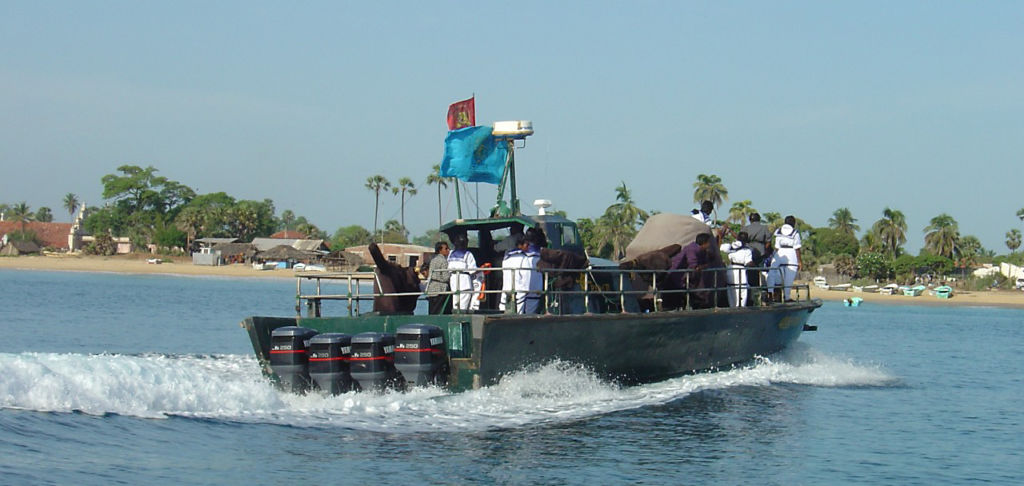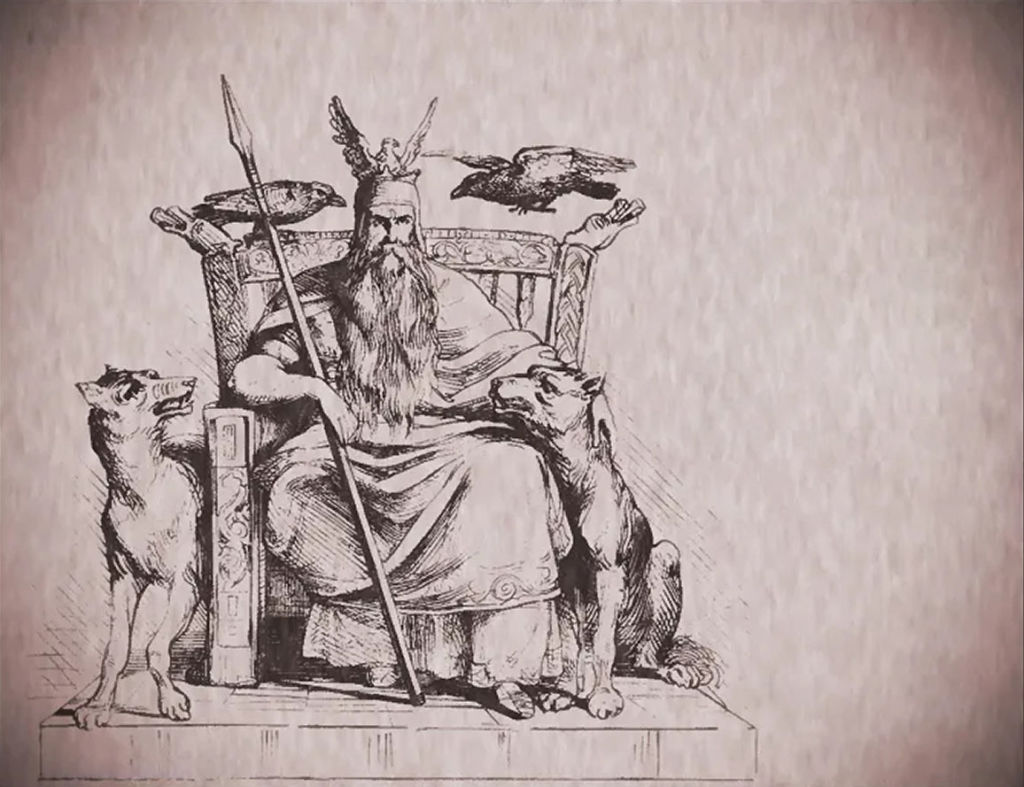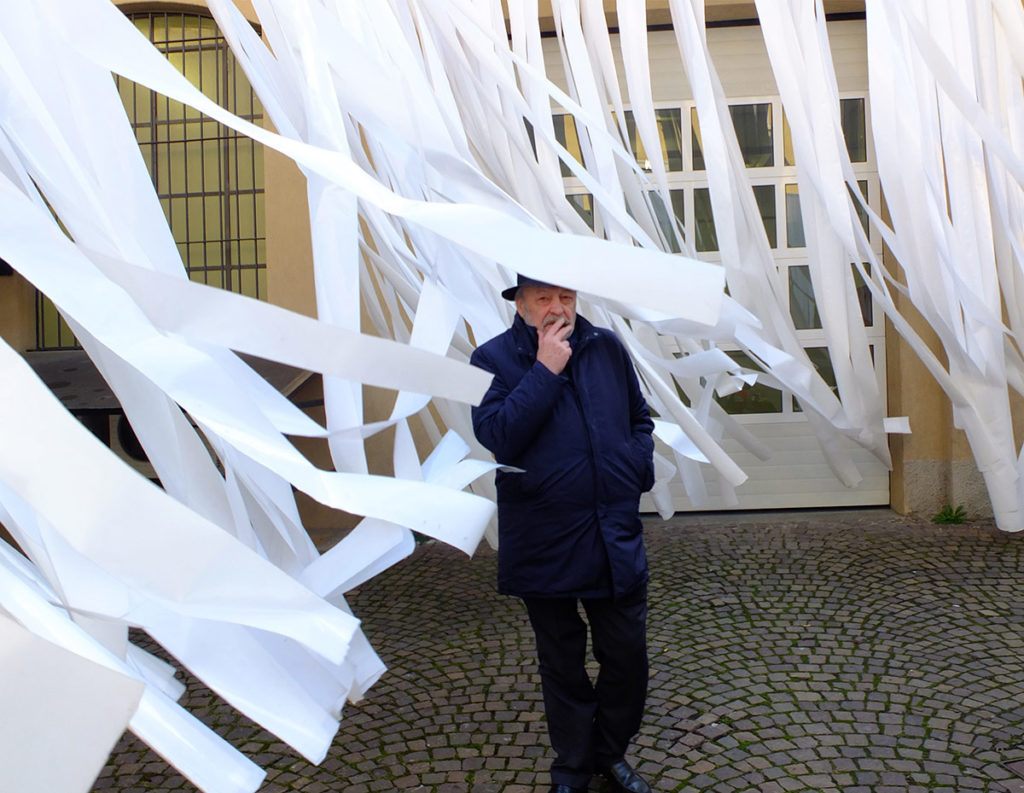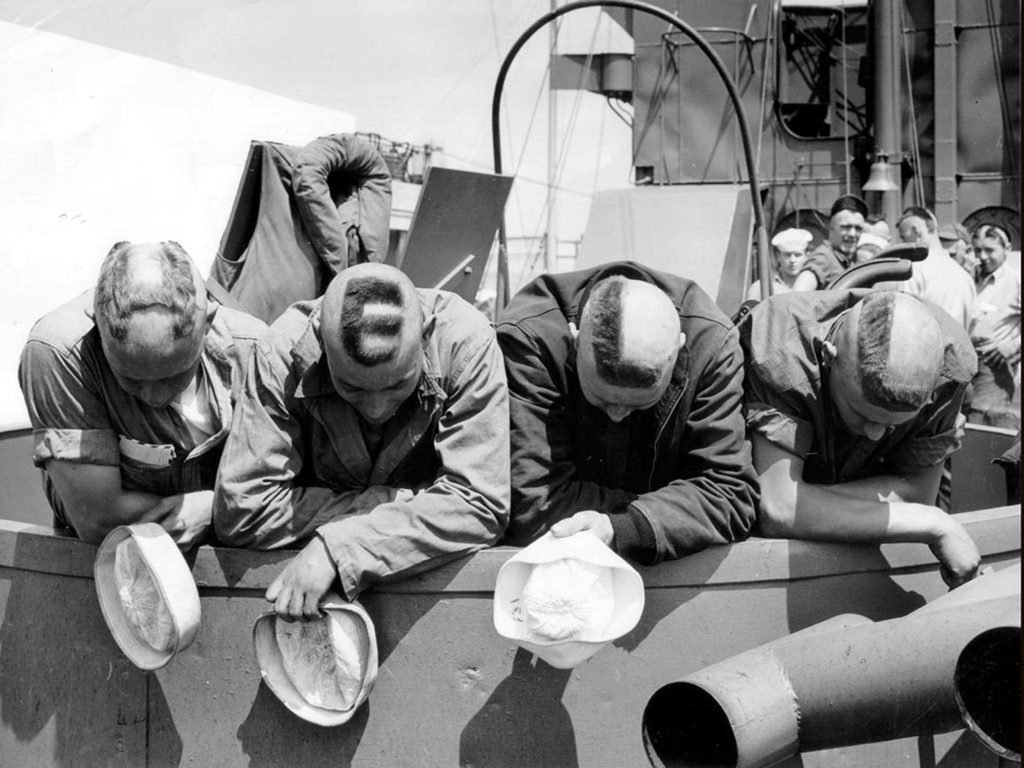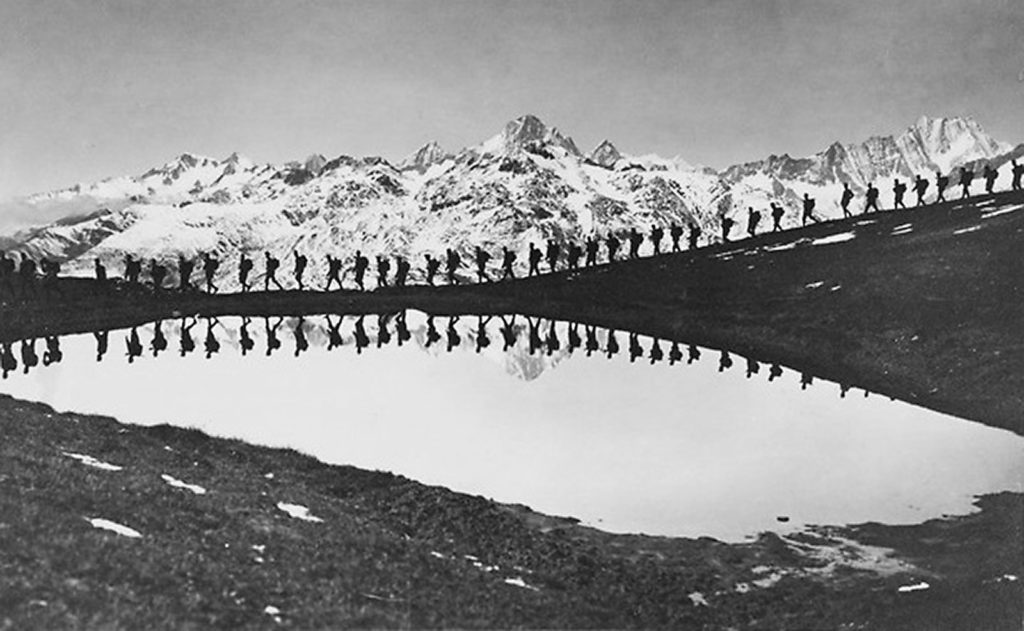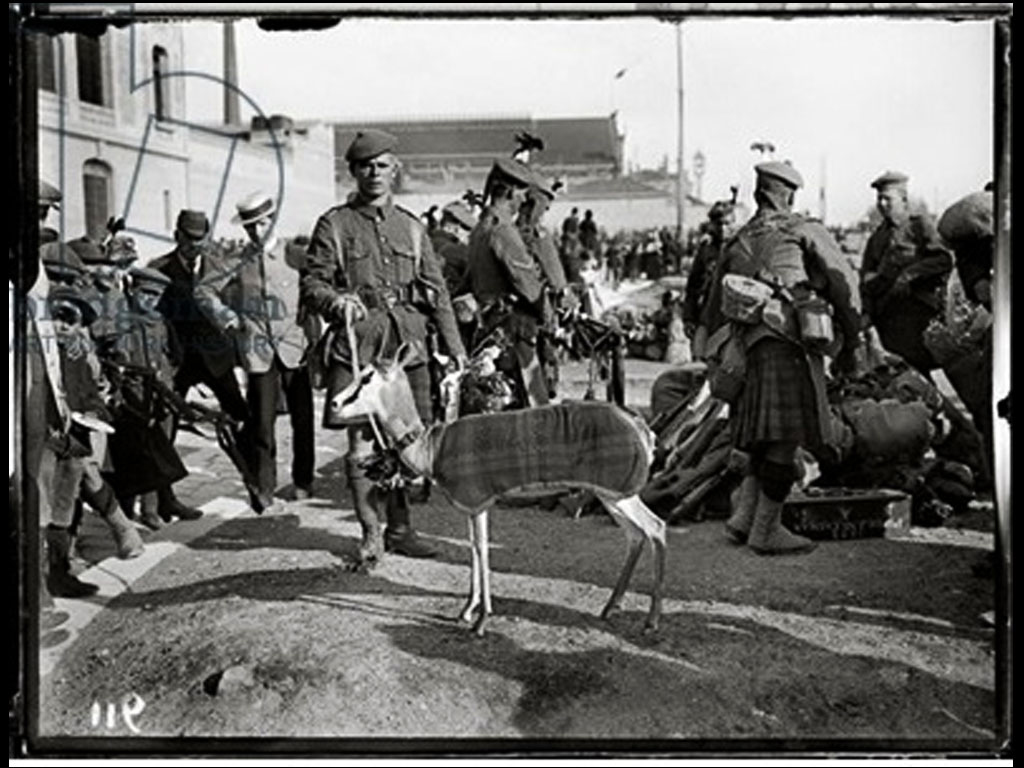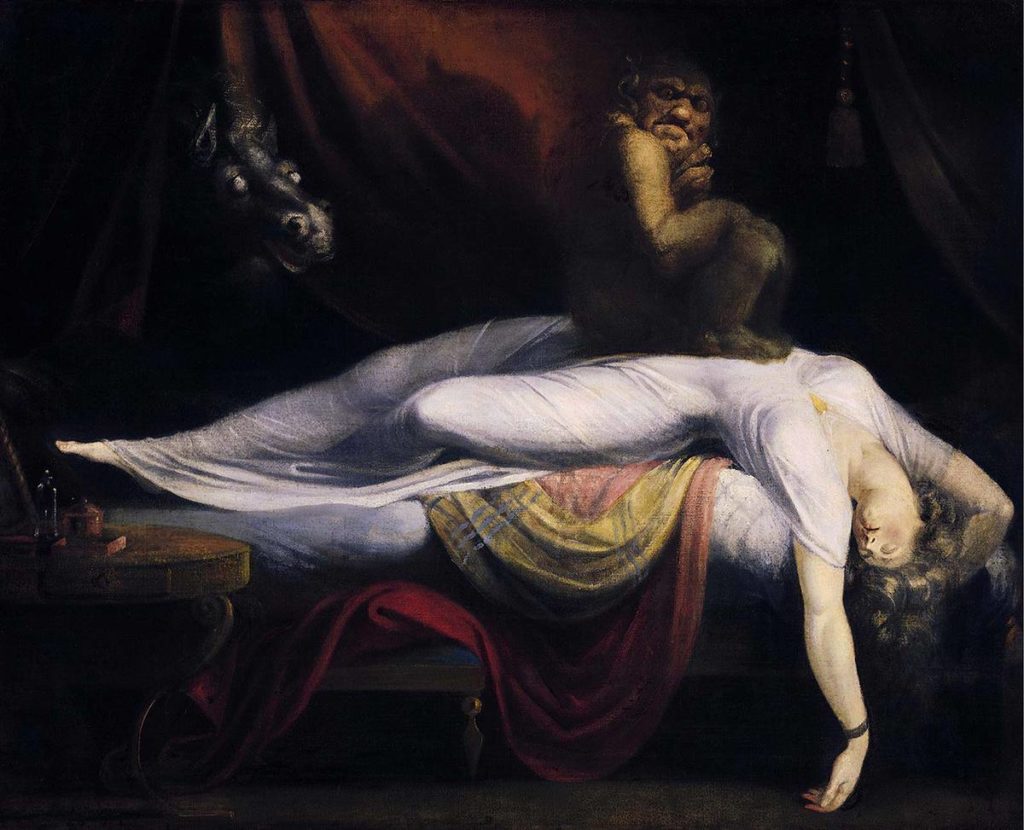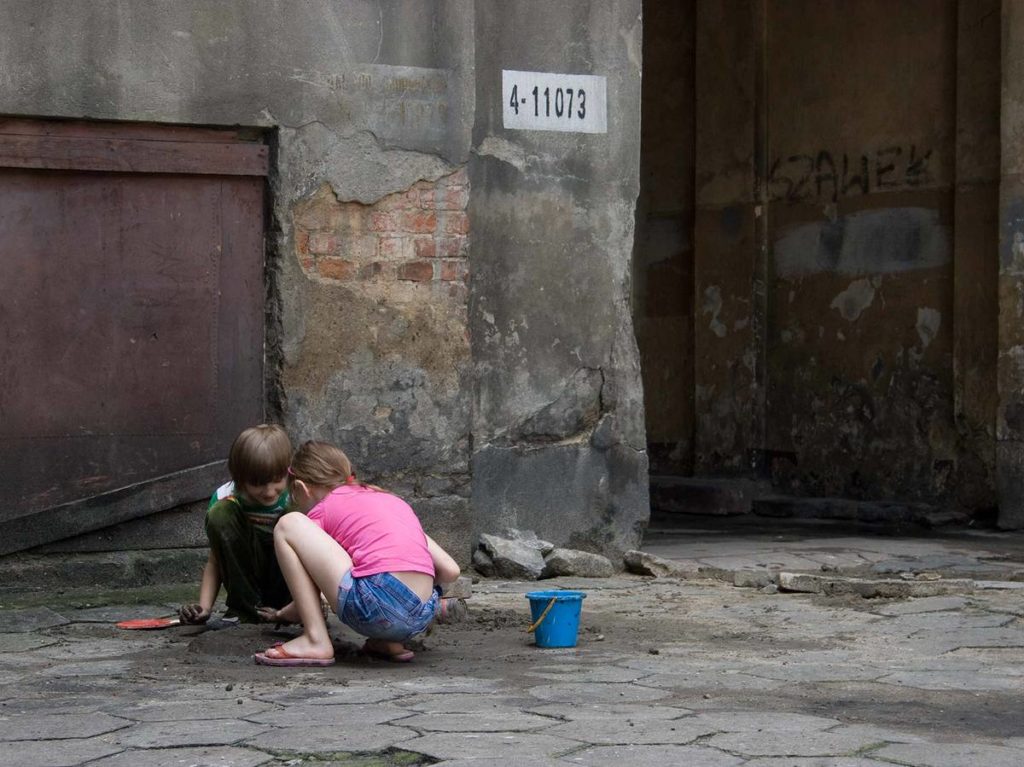In the early 1990s, after the Berlin Wall fell and following 40 years of Cold War marred by multiple conflicts across the planet, it was the dawn of a new hope for the world. Today, the world has been left wanting. Drama and trauma continues to pile up, and in the crosshairs are ecological disasters that have gradually become a part of our routine. With a lot of faith and commitment, Kim Levin asks a fundamental question: how can contemporary artists represent these disasters, or better yet, how can art play a role in raising awareness about the harm happening today? Without appealing to the spectacular or entering into a trauma bidding contest, that is.
“There is no document of civilization that is not at the same time a document of barbarism.” Those all too familiar words of course are from Walter Benjamin, who committed suicide during his attempt to escape from Nazi-occupied Europe in 1940. They are on his tombstone in Catalonia.
In October 1991 the annual Congress of the International Association of Art Critics (AICA) took place in the United States, in Santa Monica, California, co-organized by our late colleague Merle Schipper and myself. Some fifty years on, the thousand-year Reich was no more, the Berlin Wall had come down, the Soviet system had collapsed and everything seemed possible. The theme of the congress was “Beyond Walls and Wars: Art, Politics, and Multiculturalism.” Few people took seriously the hints of a new repressiveness in the U.S.: Andres Serrano had been attacked in the Senate for “blasphemy;” a Cincinnati museum director had been on trial for “pornography” because of a Robert Mapplethorpe exhibition. During the 1991 Congress, which featured papers by AICA members from nearly all the ex-Soviet satellite states, Yugoslavia suddenly split apart, leaving two speakers temporarily stateless. Nevertheless, it was a euphoric moment of change and possibility.
The world has changed drastically since that optimistic interlude. At that time, there were five billion people on earth. Now there are more than seven and a half billion. Countless geopolitical disasters, economic failures, political miscalculations, asymmetric battles, terrorist campaigns, ecological catastrophes, and willful demolitions of our human heritage have happened in the intervening years–including the ancient Buddhas of Bamayan in 2001, the sacking of the Baghdad museum in 2003, the destruction of the grand al-Nuri Mosque in Mosul last summer. The refugee crises, the rise of right-wing nationalisms, the decline of democratic values, the omnipresence of surveillance, and the incivility of social media are among the issues that beset the world now, along with new walls and wars. Migration, which has become a global emergency, is central. Our current century has already seen countless images of desperate refugees fleeing their homelands. To be relevant, contemporary art must acknowledge this on a profound level.
The art community comes to this discussion with a major misunderstanding. Ever since “Magicians of the Earth,” the themes of large international exhibitions and biennials have often involved a nomadic way of life and a migratory aesthetic. Artists, curators, and critics have pursued their own itinerant careers, sometimes failing to distinguish between voluntary nomadism and the involuntary urgency of the refugee crises around the world. As Deleuze and Guattari once noted, to be nomadic is a way of relating to de-territorialized space, while a migrant is forced to cross territorialized spaces. There is an insurmountable difference between them. One is voluntary. The other is not. Everywhere is not the same as nowhere.
Divisiveness, rage and panic
I live in a country I no longer recognize as my own, wondering at what point might I be forced to ask for refuge elsewhere. We all now live in a world destabilized by political disruptions and environmental catastrophes. We live in a world of eroding nation-states, expanding transnational entities, and global emergencies. Seas are rising, coral is dying, deserts are expanding, glaciers are melting. Extreme weather that used to happen once a century is now happening weekly. China, India, Nepal and Bangladesh suffered major flooding and landslides last summer. During the fall of 2017, as I was writing this, there was constant news of fresh disasters. Mammoth hurricanes inundated Texas and Florida, and flattened Puerto Rico, Dominica, and other Caribbean islands; Mexico suffered three devastating earthquakes in a matter of days. There were mass evacuations due to volcanoes and wildfires, as well as devastation from terrorist attacks, including the Las Vegas massacre, methodically planned by a white wealthy domestic terrorist, a senior citizen with no discernable motive. Meanwhile, nuclear threats and counter-threats are being tossed back and forth by deranged people in power. The mood of the moment: divisiveness, rage and outrage, panic.
In the US, which is aggravating the world’s problems, even the art world seems to have gone quite mad. In the unhinged country I come from, artists have called for the destruction of other artists’ works and for the cancellations of exhibitions, and museums are self-censoring themselves due to violent threats. I refer of course to the uproar over Dana Schutz’s Open Casket, a painting of the dead Emmett Till, at the 2017 Whitney Biennial. Back In 1955, Emmett Till, a fourteen-year old African-American youth from Chicago with a speech defect, a stutter, was visiting his granduncle in a small town in the Mississippi delta. He was kidnapped and lynched because the white female proprietor of the general store falsely accused him of flirting with her. That outrage was a catalyst for the civil rights movement. I refer also to Sam Durant’s wooden Scaffold, which was removed from the Walker Art Center’s sculpture park in Minneapolis after the Dakota tribe, or what’s left of it, staged protests. Meant as a comment on capital punishment, it replicated a gallows once used in official government hangings. In 1862, a similar gallows was used to execute 38 Dakota warriors in a town near Minneapolis after a war with the United States. Durant, who was unaware of these facts, apologized and gave the work to the Dakota elders to do with as they wished. After much discussion, they dismantled and buried it at an undisclosed site. I refer also to the outcry about Jimmie Durham’s Cherokee identity before his traveling retrospective, “Center of the World,” opened at the Walker Art Center: although Durham knows the Cherokee language and says his relatives lived on a reservation for many years, he is not registered with any of the Cherokee Nations. I also refer to “Theater of the World,” an exhibition of Chinese art from 1989 to 2008 at the Guggenheim Museum in New York. Before that exhibition opened, the museum received violent threats from animal rights activists, leading it to remove three crucial works that used live animals–two were videos, one was a structure containing scorpions, lizards, and insects. Commented a newspaper editorial: “Chinese artists find their provocative statements against oppression suppressed in the land of the free.”
This divisiveness extends far beyond the art community. In parts of the country that never accepted defeat in the civil war, Confederate monuments have been fought over; neo-Nazis, the KuKluxKlan, and a domestic terrorist caused violence and death in Charlottesville, Virginia. City officials elsewhere quietly removed controversial monuments, and the mayor of New York City suggested the possibility of removing the statue of Christopher Columbus that towers over Columbus Circle. Back when I was an art history student and we believed in the idea of progress, the battles between Byzantine Iconophiles and Iconophobes seemed a barely believable relic of ancient history. Yet we witnessed outbreaks of Iconophobia when the Soviet system collapsed, and something similar is happening in the US now that neoliberal capitalism is imploding. Having been trained as an archaeologist, I am against the destruction of historical artifacts of any sort. Selective amnesia is dangerous. The past should be preserved, if only as a warning not to repeat it.
The Angel of history
One can say with certainty that migration has been going on ever since Homo Sapiens appeared on earth and of course even before, but that unwieldy subject offers cold comfort during the present global crises. Over 65.5 million people around the world became refugees last year. Walter Benjamin’s description of the “Angel of History,” which presided over Okwui Enwezor’s 2015 Venice Biennale, remains an apt metaphor. “A painting by Klee called Angelus Novus depicts an angel moving backward, away from something he is staring at. His eyes are opened wide, his mouth stands open and his wings are outstretched. That is how the Angel of History must look. His face is turned toward the past. Where we see the appearance of a chain of events, he sees one single catastrophe, which unceasingly piles rubble upon rubble and hurls it before his feet. He would like to pause for a moment to awaken the dead and piece together what has been smashed. But a storm is blowing from Paradise; it has caught his wings and is so strong the Angel can no longer close them. The storm drives him irresistibly into the future, toward which his back is turned, and the rubble heap grows sky-high. This storm is what we call progress.”
Walter Benjamin’s words were a powerful description of a piece of art and an indelible evocation of a hopeless era. Incidentally, the work he described was not a painting at all but an early oil-transfer drawing, a mono-print. It measures a mere 31 x 24 centimeters. Paul Klee made it in 1920, Benjamin bought it in 1921 and it remained his most prized possession. The description became far more famous than the print that inspired it, which remained virtually unseen for sixty-six years.
“We would give anything to believe in progress again,” wrote a critic in the New York Times not long ago. In the May 2017 issue of e-flux journal, Hito Steyerl in conversation with Anton Vidokle, updated Benjamin’s angel: “Today the storm is blowing from a future that has been depleted of resources and hope and is driving people into the past.” Our current global predicaments have distant roots in the fragmented past but the selective amnesias and blind spots of the 20th century may be more relevant. As critics, art historians and theorists, we blame the Modernist project: a supposedly international utopianism that never acknowledged its limitations or its post-Colonial attitudes. When the Khmer Rouge took over Cambodia in the mid ‘70s, they slaughtered anyone who wore eyeglasses: that may have been the first anti-Modern genocide. The 1979 revolution against the Shah of Iran was equally anti-Modern in intent.
At that time, I was involved in Postmodernist theory, which aimed to correct the failures of modernism and modernity by means of multiculturalism, inclusiveness, and diversity. In those days, a rather strange theory of the Self and the Other infiltrated the conversation but it was never quite clear who exactly was the Other. As postmodern theory and art progressed, it regressed to smaller and smaller ethnic distinctions: the ideal of diversity somehow flipped into divisiveness. In the world of art it devolved to arguments about who had the right to speak or write about whom: “How dare you speak about the work of Russian artists, you didn’t grow up in the Soviet Union, you don’t speak the language,” a Russian curator once admonished me during a panel discussion. In the real world, it descended to ethnic cleansing and massacres—Rwanda in the early 1990s, Sarajevo in the mid-‘90s.
Social sculpture and Chronicles of Homo Sapiens
In 2010, Daniel Joseph Martinez did a stark wall installation at the Simon Preston gallery in New York. The hand-printed words scrawled across the gallery walls listed the histories of 31 major genocides, the majority of which occurred during the 20th century. The installation’s title: “Chronicles of Homo Sapiens (I am here to make lists. Let them think what they list. Most of the population of the world is listed as missing).”
The first text:
“Native Americans
1492 – 1900s: North America
Total Dead: Unknown. Estimated 10-12 million Native Americans, and only 250,000 were still alive in the territory of the United States at the end of the 19th century.”
The final text:
“Darfur
2003 – present, Sudan
Total Dead to Date: estimated 180,000 – 460,000 Sudanese.”
The only object–and the single image–was a dead hare that hung from the ceiling near the final text like an exclamation mark. The hare was a tribute to the social sculpture of Joseph Beuys, but it was also a rebuke to his optimism: The dead hare wore a miniature suicide vest.
Genocide is nothing new. And as the installation by Martinez made clear, much of the world’s population has always been listed as missing. It is the survivors of genocides, wars, famines, and other disasters who become refugees and immigrants, as they have always done.
Because the unflinching work of Daniel Joseph Martinez is still somewhat under-known, I’d like to remind you that he first gained renown as the creator of the metal admission tags for the 1993 Whitney Biennial: each tag had part of a sentence printed on it: “I cant. Imagine. Ever Wanting. To be White.” Another of his elegant provocations is the animatronic sculpture of himself that he made for the U.S. pavilion at the 2010 Cairo Biennale. Life-size and highly realistic, this biomechanical doppelganger was clothed all in white. Its flashy belt buckle spelled “Ishmael.” It flailed and convulsed alarmingly on the white floor of a white exhibition space, as if having a seizure, to the astonishment of viewers. Its title: “Call Me Ishmael: The Fully Enlightened Earth Radiates Disaster Triumphant.” Ishmael was not only the narrator of Melville’s Moby Dick, which has sometimes been interpreted as an allegory of whiteness, but also a prophet venerated by Moslems, Christians, and Jews alike. In an interview in The Brooklyn Rail, Martinez asked himself, “Can a machine become more human than a human, and can a machine be the last hope for our humanity?” He spoke of complicity.
The Power of the Absent Image
Complicity may be a requirement for an art that deals with atrocity and the ordeals of forcible displacement. Benjamin wrote that “criticism is a matter of correct distancing,” but when immediacy takes over and whole populations go missing, critical distance becomes impossible. Images lose their power. In unsettled times, the ethics of cultural relevance take precedence over aesthetic issues. And at such moments, art must be seen in terms of trauma rather than aesthetics. The absent image becomes more powerful than any possible image. For that reason Theodore Adorno’s dictum against poetry after Auschwitz is relevant again.
Think of the absent images in Alfredo Jaar’s Rwanda Project (1994-2000), which he calls “exercises in representation—they all failed.” About one of these projects, which featured a pile of hundreds of thousands of identical slides of the eyes of a survivor of the Hutu massacres, Jaar wrote, “I remember her eyes, the eyes of Guteta Emerita.” Trevor Paglan says his surveillance photographs of gorgeous skies with invisible spy satellites or drones are not about making the invisible visible but about “showing what invisibility looks like.” Thomas Hirschhorn’s installations in immigrant neighborhoods, in which lost images cancel each other out, also deal with the responsibilities of the witness. About his new “De-Pixilation” collages, he says, “No one can tell me what to see or not see.” There are also immaterial projects. Think of Tania Bruguera’s Immigrant Movement International, which she began in 2010, or her petition to the Pope to grant Vatican citizenship to refugees, which she called The Francis Effect. Think of Emily Jacir’s various projects involving border crossings between Palestine and Israel, or Kimsooja’s migrant Bottari Truck project, which relates to the traditional subjugation of women in Korea. In times of emergency, images do lose their power. I first noticed this after 9/11, when images of the World Trade Towers were instantly removed from advertisements, commercials, and postcards. Many artists are now working with the power of absence and the presence of what is missing.
“I believe war is the main event of our time,” stated Colombian artist Doris Salcedo, whose embedded art has long dealt with the missing, the forgotten, and the pain of violent displacements. Salcedo’s Shibboleth (2007-08), an enormous deep crack in the floor of the Tate Modern’s Turbine Hall, was, she said, a negative space representing borders and the immigrant experience in Europe. Her new floor installation, Palimpsest, recently on view in Madrid, pays homage to the victims of migration by sea. Consisting of 192 stone panels through which water flows, this memorial for drowned migrants involves a complex hydraulic system that causes drops of water to appear and vanish like tears: the ephemeral drops spell the names of people who drowned trying to reach Europe.
As for Klee’s Angel, which Benjamin treasured, it too was sent on an unintentional journey. Before Benjamin sought refuge from the madness in Nazi-occupied Europe in 1940, he entrusted his possessions, including Angelus Novus, to his friend Georges Bataille in Paris. Bataille passed it on to Adorno, who bequeathed it to German-born scholar Gershom Scholem, whose widow gave it to the Israel Museum in Jerusalem in 1987, where it was first seen in public. That too exemplifies the power of the absent image.
At Dokumenta 14 last summer, the Nigerian-born artist, Olu Oguibe, who was a child in war-torn Biafra, erected a 52 foot tall concrete obelisk in the heart of Kassel, which referred to the migrant crisis in Arabic, English, German, and Turkish, with the biblical words, “I was a stranger and you took me in.” This monument to the refugee was awarded the Arnold Bode prize.
Also in Dokumenta 14, William Pope.L’s invisible Whispering Campaign, a mobile sound installation, spread the whispers and songs of migrants from hidden speakers in maintenance vehicles and on public spaces in Kassel and Athens, while addressing the liminal status of refugees. Its invisible materials—nation, people, sentiment, language, and time—attest to the power of the absent image. The works of Pope.L, including his several extreme “crawls” up Broadway, enact the clichés, the struggle, and the invisibility of being descended from slaves. Like Broadway itself, the “crawl” project is called The Great White Way: 22 miles, 9 years, 1 street. Pope.L’s recent installation titled Trinket featured an enormous 54-foot long American flag, being blown to shreds by the strong wind from powerful electric fans.
The limits of human articulation
Among works dealing with immigration, a number of artists in exile have used maps as metaphors. Among them is Lebanese-Palestinian-British Mona Hatoum, whose Routes II (2002) tracked global flight paths; Dutch artist Lonne van Brummelen’s trilogy Grossraum (2004-05) about three border crossings into Europe; and Moroccan-French Bouchra Khalili’s Mapping Journey Project (2008-2011), which documents eight clandestine journeys across the Mediterranean. Tiffany Chung, a Vietnamese-American artist who was a young refugee herself at the end of the Vietnam war, has been making embroidered maps, cartographic drawings, and installations that deal with memory, ruins, absence and loss. The Vietnamese diaspora, the Kobe earthquake of 1995, and the Syrian War of 2014 are among her subjects.
Irish-born artist Richard Mosse is best known for his infrared heat photographs of the landscapes upon which the Congo wars took place, taken with discontinued military surveillance film in colors that are beyond the visible spectrum. His Heat Maps of 2016, taken with a thermal military camera, address the refugee crisis. Their silvery tones and metallic colorlessness provide phantom images of sites repurposed in order to house refugees, including the old Templehof airport, Idomeni Camp, and Hellenikon Olympic Arena. Mosse has also made a three-screen refugee film, “Incoming,” producing evanescent images of fleeing Iraqis and Syrians with a long-range thermal military camera. He says his work begins to account for “what exists at the limits of human articulation.”
Kara Walker’s 2008 “Bureau of Refugees” dealt with the migration of freed slaves from the southern states to the north at the end of the civil war. The significance of this major exodus has long been neglected by history and art, with the exception of Jacob Lawrence’s Migration Series of paintings from 1940-41. Walker’s monumental sugar sphinx, A Subtlety or The Marvelous Sugar Baby…,” a temporary work in the obsolete Domino Sugar Factory in Brooklyn in 2014, surrounded by molasses children, brilliantly summed up the bitter history of African-American life with its sweet smell and its complex references to slavery and Aunt Jemima. It was dedicated to the unpaid and underpaid artisans who worked with sugar in the antebellum south. Her most recent show of works on canvas at Sikkema Jenkins Gallery in NY summed up the inextricable culpability of race relations in the US.
While Walker’s work investigates the aftermath of slavery, new paintings by Ellen Gallagher, recently on view in Los Angeles, delve into the Middle Passage—the forced migration in overcrowded slave ships of kidnapped peoples taken from Africa to the Americas. Gallagher focuses on the sea, which swallowed so many. Speaking of the missing, it has been estimated that between 1525 and 1866, a minimum of 20 million people were kidnapped for the slave trade. Half of them died along the way. Her title, “Accidental Records,” refers to the sea and the millions of missing who were thrown into its depths. Gallagher says: “The sea does not care about us…. As I write, thousands of migrants are crossing the seas….“.
Trauma as a spectacle
Then there is Slovakian filmmaker Tomas Rafa, who has been documenting “the shameful problem of nationalism” since 2009. His cinema-verite films, “The New Nationalisms,” show the clashes and protests of xenophobic and neo-Fascist groups against desperate refugees entering central Europe. They bear witness to refugee life at the borders of countries and in the center of cities. The footage is powerful and difficult to watch, as it should be. Rafa’s work is an unmediated witness to immediacy: it is artfulness that absents itself along with distance.
And then there is Ai WeiWei, who as we all know has been repeatedly mistreated by Chinese officials and is now himself a refugee, but a world famous one. For the past few years, he has been deeply engaged with the refugee crisis on the Greek isle of Lesbos and elsewhere and has become the poster-boy of refugee art. His vast public project about fences was recently in New York. His new film, ”Human Flood,” opened to good reviews. Ai’s activism is admirable. Yet his artistic responses to displacement and loss can be problematic. He has used the discarded garments of refugees in installations, has placed thousands of discarded life preservers on museum and concert hall facades. His tasteless photographic reenactment of the news photograph of drowned Syrian refugee child Alan Kurdi was an embarrassment. His Law of the Journey, exhibited at Prague National Gallery last summer, included a 70-meter-long refugee boat carrying 300 faceless figures. Let’s just say that the power of the absent image eludes it.
Trauma can also become spectacle. Recently at the Prada Foundation in Milan, academy award winning filmmaker Alejandro Gonzalez Inarritu presented Carne y Arena (Virtually Present, Physically Invisible). Described as a disorienting hi-tech work of cinematic virtual reality, it was said to provide a convincing virtual experience of the terrors of the journey between Mexico and the US border, with patrol copters, border agents, holding cells, and virtual migrants. I suspect an ethical dilemma at the digital core of this vicarious virtual engagement, which lasted slightly more than six minutes. When dealing with the fraught subject of migration, it is necessary to question the fine line between empathy and exploitation, between complicity and confrontation, between trauma and gratuitous spectacle. An unbridgeable abyss exists between the everywhere and the nowhere.
Civilization and barbarism
One final irony is worth mentioning, regarding Klee’s little angel. Professors J.K. Eberlein and Carl Djerassi have separately proposed that Angelus Novus was a direct reference to Hitler. On historical grounds, it’s quite possible. The rise of Hitler, who served in a Bavarian regiment of the German army during World War I, began in 1919 in Munich. By 1920 his pre-Nazi oratory had drawn flocks of adherents to his extreme views. Klee also served in the German army in a Bavarian regiment late in the war (painting camouflage on airplanes) and may well have heard of him. The picture’s title supports this interpretation: Angelus Novus was never the angel of history: he was a New Angel. Attribute that to Klee’s sense of irony and Benjamin’s creative misinterpretation. It was recently discovered by RH Quaytman that Angelus Novus is mounted on a 19th century portrait etching of Martin Luther, which certainly adds to the irony. Both Klee, who was Catholic, and Benjamin, who was Jewish, would become equally unwelcome in Hitler’s Germany.
And one last thought about civilization and barbarism. As warring factions and natural disasters trash our civilizations and our planet, human beings are being displaced on a monumental scale. I’d like to propose that we are living in an intermediate era, not unlike the three Intermediate Eras that separated the Old Kingdom, Middle Kingdom and New Kingdom in ancient Egypt: periods when the central political structures failed and local “warlords” ruled. Our transitional era is scarred by the rise of robotic technologies and fascistic tendencies, and the resurgence of apocalyptic religions. Meanwhile, the digital revolution, with its dependence on algorithms and the Internet, is contributing to the demise of rationality. Humanity has been held responsible for causing the sixth great extinction. If Egyptian archaeology is any guide, our own global transition—following the end of the modernist paradigm–may last a hundred years or more. And if humanity survives the sixth extinction, we could find that we are the victims of a new post-digital dark age of our own making.
[rl_gallery id=”12070″]
© 2017KimLevin
Thanks to Mathilde Roman and AICA
Cover: Kimsooja, the Bottari Project (1996-)

